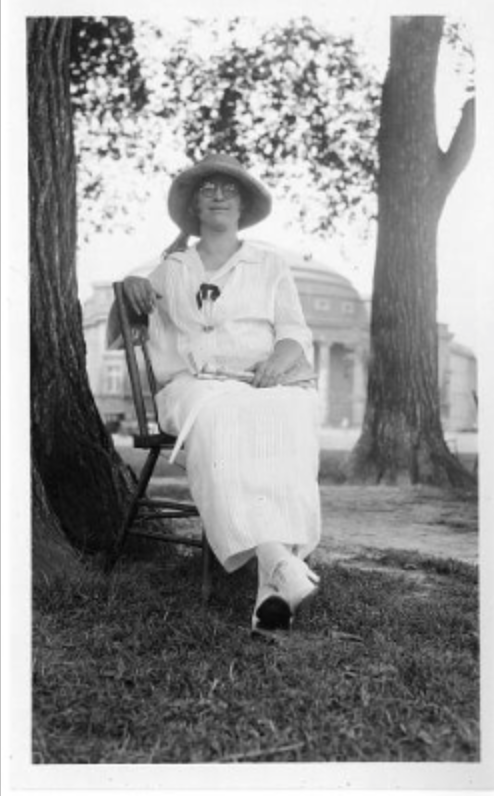Written by Ashley Lucckesi, a third year student studying Public Health and Molecular & Cell Biology, participating in the IMLS, “Strategic Stewardship for Sustaining the Archives of the Museum of Vertebrate Zoology” project.

Hilda Hempl Heller, by Watson Davis, 1924, Smithsonian Institution Archives. Image # SIA2008-3769.
Over the past couple of weeks, I’ve had the opportunity of peeking into the lives of many scientists all over the world who have communicated with the MVZ. These files encompass more than the actual correspondence; they offer a glimpse into the lives of the courageous and intelligent scientists who made groundbreaking work in all fields of science. As a woman pursuing a career in science, it has been particularly inspirational to come across the name of a female scientist amongst the sea of male scientists.
One female scientist I’ve had the opportunity of reading about is the bacteriologist, Hilda Hempl Heller. Her ex-husband and zoologist Edmund Heller, was particularly well known for his expeditions in South Africa with the Smithsonian Institute.¹ Hilda and Edmund were married at this time, and she joined him on many of his expeditions through South Africa. However, many of Hilda’s adventures and contributions have gone unnoticed.
Despite women having remarkably narrow opportunities for higher education, Hilda persevered and excelled. Hilda graduated from Stanford in 1914, with a degree in biology and emphases in bacteriology and zoology. She eventually obtained her doctorate in 1920 at the University of California.³
After divorcing her husband in 1928, Hilda went on her own adventures and scientific expeditions.³ Most notably, she conducted research and fieldwork in Peru for many years. Hilda’s correspondence with the MVZ was between 1951 and 1952, which was during the time of one of her field studies in Peru. During this period, she was working closely with the MVZ under Carl B. Koford, studying mammals.
Hilda also made great scientific strides on classifying and isolating anaerobic bacteria in the 1920s and 1930s.² However, many of her publications weren’t made available until recent years. Despite the lack of formal recognition of her scientific achievements and expeditions, her story is utterly inspiring for the current and future generations of women in science. Her ability to rise above negative societal stereotypes and overcome patterns of discrimination in the scientific community is empowering, and demonstrates the level of courage and strength it took to be a successful woman in a male-dominated field. I admire Hilda for her fortitude and efforts in paving the way for future female scientists, and I hope to follow in her footsteps for future generations.
List of References
- Bracaglia, R. (2016, May 16). Weird and Wonderful: The Surprising Mrs. Hilda Hempl Heller [Web log post]. Retrieved from https://siarchives.si.edu/blog/weird-and-wonderful-surprising-mrs-hilda-hempl-heller
- Heller, H. H. (2013). Classification of the Anaerobic Bacteria. Isha Books.
- Parilla, L. (2015, July 15). Hilda Hempl Heller, in the Field [Web log post]. Retrieved from http://nmnh.typepad.com/fieldbooks/2012/07/hilda-hempl-heller-in-the-field.html
